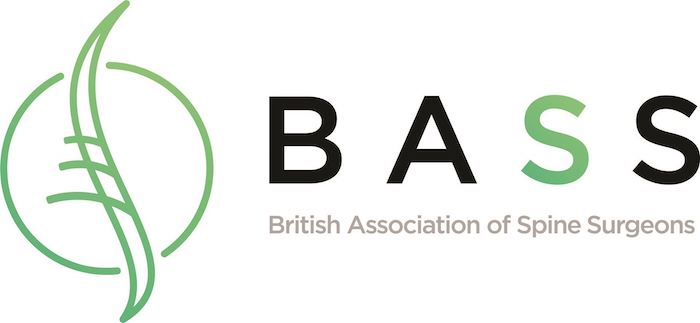Spinal injections: nerve root blocks for leg pain
Introduction
Nerve root blocks are commonly used in the management of leg pain. They do exactly what the name says - in that they are used to block the nerve. When a patient presents with leg pain, this often passes down the leg into a very specific area. With our understanding of which nerves supply which area of the leg, it is relatively straightforward to work out which nerve is being compromised.
Nerves can be compromised by direct compression or by chemicals dropping onto the nerve. A simple analogy would be, for example, if someone was standing on your hand or if someone dropped acid onto your hand. The first example is that of compressive nerve root irritation, and the second is that of chemical irritation. Either way, the nerve would be irritated and the patient would feel leg pain.
After using an MRI to diagnose which nerve is being affected and confirming that the clinical picture (i.e. how you describe your pain) corresponds with the MRI findings, the logical thing to do - in order to confirm that the nerve root irritation is the cause of the pain - is to block the nerve using an anti-inflammatory steroid injection into your spine.
This can be done either with the patient awake or as I prefer to do, with the patient asleep using a very light general anaesthetic administered by a Consultant Anaesthetist (usually Dr da Silva). I find that by doing it this way, it is much more comfortable for the patient and I don’t have to worry about any sudden movement by the patient during the procedure. The anaesthetic is given into a vein through a small needle in the back of the hand and does not involve any tubes or gases. It is usually very short-acting and only given whilst I am advancing the needle into the back.
The needles are placed using x-ray guidance, taking x-rays from front to back and from side to side so I know exactly where the tip of the needle is. Once I think the tip of the needle is in the right place, I put dye down the needle. This outlines the nerve root I am aiming to block. Once I have confirmed the needle is close to correct nerve root by seeing the dye in the right place, I then put the anti-inflammatory steroid down the same needle in order to block the nerve.
As one nerve can supply different areas or different areas can be supplied by adjacent nerves, it is not unusual to need to block more than one nerve at the same time in order to ensure the best possible result. This is due to cross innervation.
Occasionally, it may be necessary to push the needle a little bit further into the spinal canal, under x-ray guidance, to perform an epidural around the same area. By doing this the steroid can travel up and down in the epidural space and block nerves above and below at the same time. This is known as a transforaminal epidural as the needle passes into this space through the foramen. The primary difference between a nerve root block and a transforaminal epidural is to do with the position of the needle. With a nerve root block, the needle remains outside of the spinal canal and the nerve root is identified outside the spinal canal. With a transforaminal epidural the needle passes into the epidural space usually within the spinal canal and the dye is seen clearly within the canal, providing more of a generalised block.
Frequently asked questions
Do they work?
As with all things, there are no guarantees that a nerve root block will work. If the cause of the pain is not due to that nerve, blocking it will not make a difference. Sometimes a nerve is very irritated and is resistant to a nerve root block but as nerve root blocks are a very safe procedure it is incredibly important to start with a nerve root block rather than rushing into surgery.
A nerve root block is safe, requires minimal downtime and avoids all the significant risks associated with more invasive spinal surgery.
How long do they last?
This is a relatively difficult question to answer. The aim of the nerve root block is to reduce inflammation in the nerve. When a nerve becomes inflamed, it becomes swollen. When it is swollen, it does not fit the space in which it sits. This can be either because the space has become smaller or there is something else sitting in the space making it smaller, such as a disc herniation. We know that a disc herniation becomes smaller over time due to the body’s natural defences dealing with it. This can take up to two years. This is a long time to be in pain.
My aim by doing a nerve root block is to reduce the inflammation and swelling in the nerve. Once the swelling is reduced, the nerve will no longer be in contact with the disc herniation and the patient feels less leg pain. Obviously, there is a risk that the leg pain could return due to the disc rubbing the nerve again, but we know the disc continues to get smaller with time. I know from experience that the steroid will stay in your system for about 6 weeks. If after 6 weeks the leg pain does not recur, then there is a good chance that the nerve has not become irritated by the disc herniation again and the injection has worked.
Does the injection speed up the rate at which the disc disappears?
There is no evidence that having a nerve root block or a transforaminal epidural will increase the rate at which the disc disappears. We do know that discs do disappear (resorb) over time. This can take up to 2 years, but there is absolutely no need for someone to be in pain for 2 years while the disc resorbs. The aim of the injection is to create a space between the disc and the nerve.
Is it just masking the pain?
The simple answer is no. It reduces the inflammation in the nerve which reduces the pain in the leg. Masking the pain means that the patient is not experiencing pain. If there is a very serious reason for the pain then generally no amount of masking is possible, and the patient still experiences pain.
In the majority of situations where there is nerve root irritation, reducing the inflammation and irritation of the nerve will reduce the symptoms which is why I think that it would be more accurate to say that the nerve root block has reduced the inflammation, taking the pain away.
Will I do myself more damage if I cannot feel the pain?
Certainly, there are conditions where if you do not feel the pain then you may do yourself more damage. The pain response is often used by the body as a protective mechanism to ensure that you do not do yourself more damage. Despite this, being in pain is an extremely unpleasant experience and I must admit that having had a massive disc herniation myself and experienced many of the symptoms that my patients experience, I preferred not to be in pain.
Once pain free it is important to be sensible to ensure that the nerve does not become irritated again. Obviously, there are situations when the nerve root will become irritated again irrespective of what you do but certainly having a period without pain is very welcome, especially when you have nerve root pain for a significant length of time.
So to answer the question, the answer is that you could do more damage but hopefully you won’t, as you will be sensible following the injection and not do anything that may bring the pain on again and cause recurrent nerve root irritation.
Will I need more than one injection?
This question was answered very clearly in a study performed in Switzerland in 2018. This looked to see whether repeat root blocks for nerve root pain following a disc herniation was useful. The study looked at over 100 patients, all of whom were treated with a nerve root block. Out of all the patients, two-thirds improved following a nerve root block. The remaining one-third were given a second injection and less than one percent of the patients who underwent the injections required surgery.
Therefore, in response to the question, two-thirds of patients will get better from one injection, the remaining one-third may require a second set of injections and the majority of the patients will get better with injections without requiring any form of surgery.



